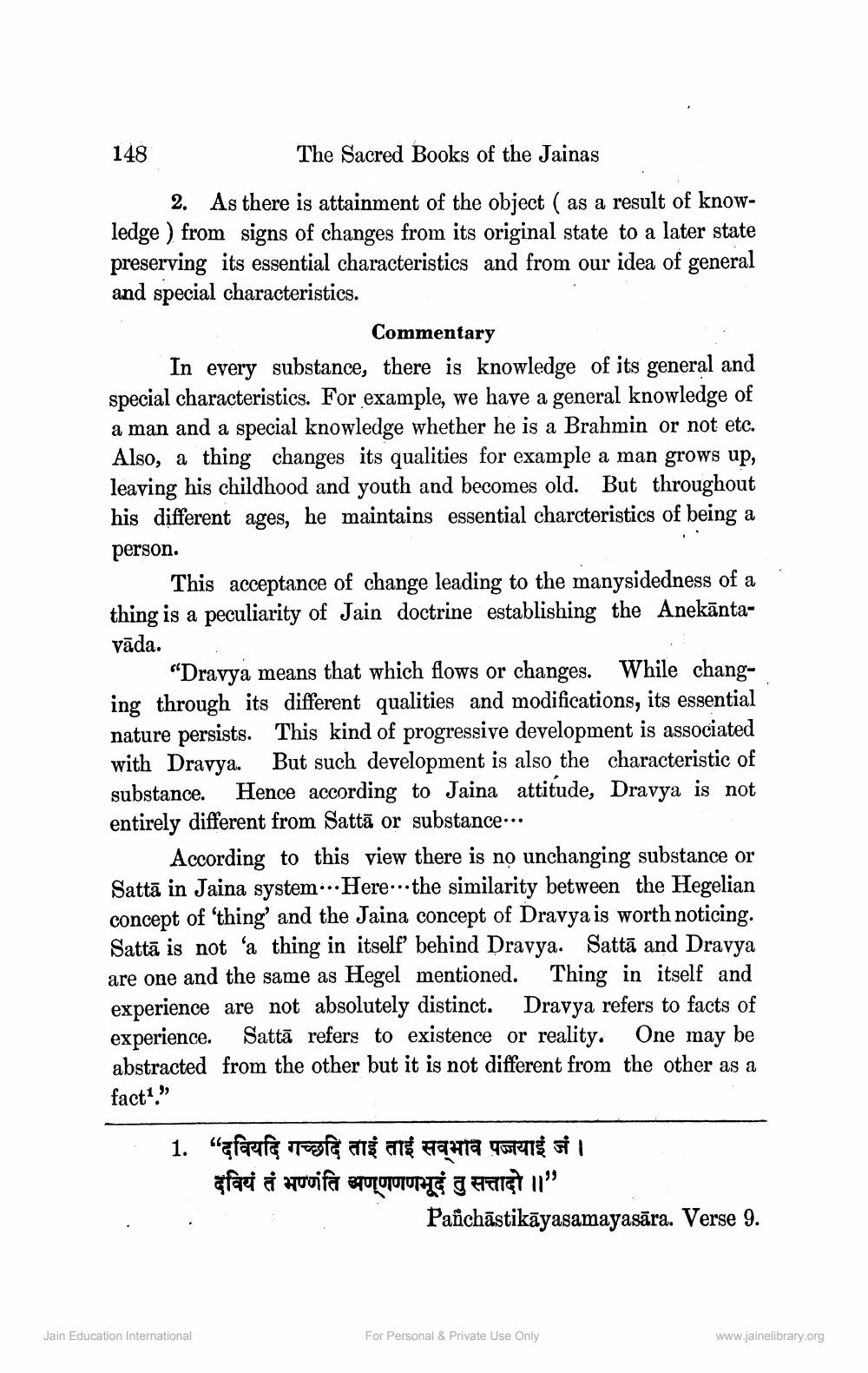________________
The Sacred Books of the Jainas
2. As there is attainment of the object (as a result of knowledge) from signs of changes from its original state to a later state preserving its essential characteristics and from our idea of general and special characteristics.
148
Commentary
In every substance, there is knowledge of its general and special characteristics. For example, we have a general knowledge of a man and a special knowledge whether he is a Brahmin or not etc. Also, a thing changes its qualities for example a man grows up, leaving his childhood and youth and becomes old. But throughout his different ages, he maintains essential charcteristics of being a person.
This acceptance of change leading to the manysidedness of a thing is a peculiarity of Jain doctrine establishing the Anekantavāda.
"Dravya means that which flows or changes. While changing through its different qualities and modifications, its essential nature persists. This kind of progressive development is associated with Dravya. But such development is also the characteristic of substance. Hence according to Jaina attitude, Dravya is not entirely different from Satta or substance...
According to this view there is no unchanging substance or Satta in Jaina system. Here the similarity between the Hegelian concept of 'thing' and the Jaina concept of Dravya is worth noticing. Satta is not 'a thing in itself' behind Dravya. Satta and Dravya are one and the same as Hegel mentioned. Thing in itself and experience are not absolutely distinct. Dravya refers to facts of experience. Satta refers to existence or reality. One may be
abstracted from the other but it is not different from the other as a fact1."
1. “दवियदि गच्छदि ताई ताईं सव्भाव पज्जयाई जं । दवियं तं भण्णंति अण्णणणभूदं तु सत्तादो ।"
Jain Education International
Pañchastikāyasamayasara. Verse 9.
For Personal & Private Use Only
www.jainelibrary.org




